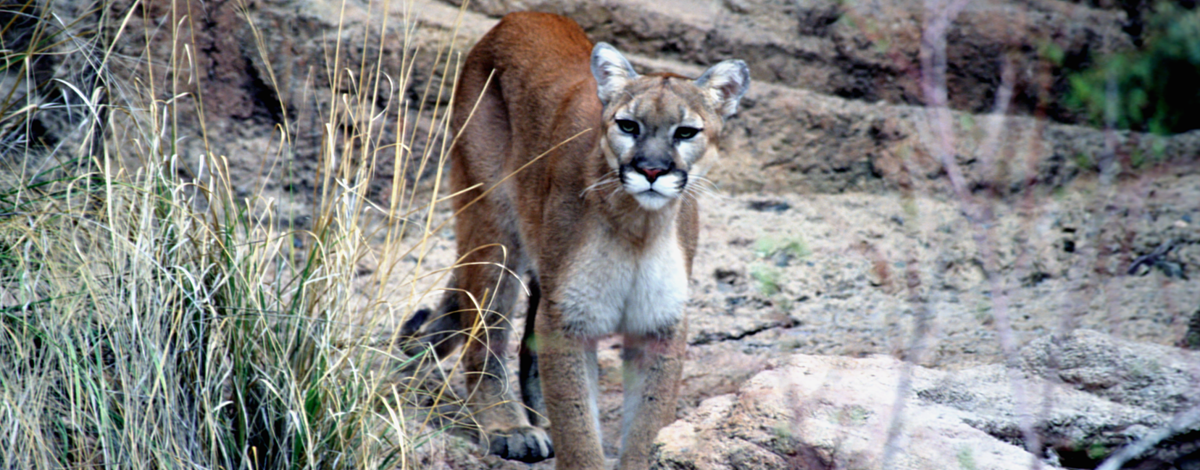When living close to wildlife, no matter the species, sometimes conflicts arise—especially this time of year. Mule deer come down out of the hills to winter at lower elevations, crossing busy roadways near towns and sometimes feeding on hay stacks or people’s landscape plants. Mountain lions are also on the move, sometimes following mule deer (their primary food source) right into someone’s backyard or farm.
Though encounters with mountain lions are typically rare, it seems there are always a few interactions with mountain lions near homes and livestock in southeast Idaho communities each year—and that can raise concern with residents. To help people reduce conflicts with mountain lions where they live, work, and play, here are a few tips:
- Provide small livestock (goats, chickens, etc.) a safe place to spend the evening, such as a chicken coop, barn or shed. Pet owners should also provide some type of secure shelter for their pets, especially at night when mountain lions are more active.
- When letting your pets out of the house, turn on exterior lights, call loudly, or follow your pet outside to help deter any lions from sticking around in the yard with your pet in close proximity.
- Do not leave your pets’ food outside and secure your garbage. Pet food and trash attracts other wildlife that in turn may attract a mountain lion to your property.
- Do not intentionally feed big game or turkeys on your property which can also draw in mountain lions.
- In the unlikely event of an encounter with a lion, stand your ground and make yourself appear as large as possible by standing on a rock or holding your arms up. Do not turn or run; rather, back away slowly while leaving the lion an escape route. Shout or yell at the mountain lion, but don’t scream. A high pitched scream may sound like a wounded animal. Almost every time, the lion will run off, but if the lion attacks, don’t play dead-- fight back! Keep in mind that attacks by mountain lions on humans are very rare; since 1990 there have been 4 recorded attacks on humans by mountain lions in Idaho, none of which were fatal.
For more tips about living and recreating in lion country, check out Idaho Fish and Game’s brochure Living with Mountain Lions which can be found at regional Fish and Game offices or online at https://idfg.idaho.gov/sites/default/files/brochure_living-with-mtn-lio….
If you have any other questions or concerns about mountain lions in Marsh Valley, Lava Hot Springs, and surrounding areas, you can contact local Senior Conservation Officer Nick Noll at 208-221-8134. For other parts of the Southeast Region, call your local Fish and Game conservation officer or the Southeast Region Fish and Game office at 208-232-4703.


